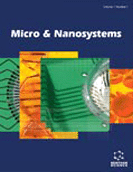Abstract
Background: The determination of the mechanical properties of biological samples using Atomic Force Microscopy (AFM) at the nanoscale is usually performed using basic models arising from the contact mechanics theory. In particular, the Hertz model is the most frequently used theoretical tool for data processing. However, the Hertz model requires several assumptions, such as homogeneous and isotropic samples and indenters with perfectly spherical or conical shapes. As it is widely known, none of these requirements are 100 % fulfilled for the case of indentation experiments at the nanoscale. As a result, significant errors arise in the Young’s modulus calculation. At the same time, an analytical model that could account complexities of soft biomaterials, such as nonlinear behavior, anisotropy, and heterogeneity, may be far-reaching. In addition, this hypothetical model would be ‘too difficult’ to be applied in real clinical activities since it would require a very heavy workload and highly specialized personnel.
Objective: In this paper, a simple solution is provided to the aforementioned dead-end. A new approach is introduced in order to provide a simple and accurate method for mechanical characterization at the nanoscale.
Methods: The ratio of the work done by the indenter on the sample of interest to the work done by the indenter on a reference sample is introduced as a new physical quantity that does not require homogeneous, isotropic samples or perfect indenters.
Results: The proposed approach provides an accurate solution from not only a physical perspective but also a simpler solution which does not require activities such as the determination of the cantilever’s spring constant and the dimensions of the AFM tip.
Conclusion: It has been observed from this opinion paper that the solution aims to provide a significant opportunity to overcome the existing limitations provided by Hertzian mechanics and apply AFM techniques in real clinical activities.
Keywords: Mechanical properties, non-homogeneous samples, anisotropic samples, young's modulus, indentation work, nanoscale.
[http://dx.doi.org/10.1007/s12195-008-0037-3]
[http://dx.doi.org/10.1016/j.mimet.2011.05.021]
[http://dx.doi.org/10.3791/50497]
[http://dx.doi.org/10.1016/j.micron.2011.07.017]
[http://dx.doi.org/10.1155/2019/8452851]
[http://dx.doi.org/10.1016/j.micron.2007.06.011]
[http://dx.doi.org/10.2174/1876402910666180426114700]
[http://dx.doi.org/10.1038/s41596-018-0031-8]
[http://dx.doi.org/10.1088/2053-1591/aaef10]
[http://dx.doi.org/10.1088/1361-6404/aa5cd6]
[http://dx.doi.org/10.1038/s42254-018-0001-7]
[http://dx.doi.org/10.1039/C8NR06146G]
[http://dx.doi.org/10.1088/1478-3975/8/1/015007]
[http://dx.doi.org/10.1016/j.bbagen.2012.02.006]
[http://dx.doi.org/10.1088/0957-4484/22/21/215101]
[http://dx.doi.org/10.1088/1742-6596/146/1/012023]
[http://dx.doi.org/10.1529/biophysj.106.083097]
[http://dx.doi.org/10.1039/b803355b]
[http://dx.doi.org/10.1007/s002490050213]
[http://dx.doi.org/10.1016/j.bbrc.2008.07.078]
[http://dx.doi.org/10.1016/j.jmbbm.2011.11.010]
[http://dx.doi.org/10.1016/j.abb.2011.12.013]
[http://dx.doi.org/10.1007/s12668-016-0191-3]
[http://dx.doi.org/10.1038/nnano.2007.388]
[http://dx.doi.org/10.1529/biophysj.104.045476]
[http://dx.doi.org/10.1529/biophysj.105.067496]
[http://dx.doi.org/10.3233/BIR-1991-283-419]
[http://dx.doi.org/10.1182/blood-2006-08-043570]
[http://dx.doi.org/10.1038/nnano.2012.167]
[http://dx.doi.org/10.1039/C5NR02192H]
[http://dx.doi.org/10.1038/nnano.2008.410]
[http://dx.doi.org/10.1016/S0006-3495(04)74375-1]
[http://dx.doi.org/10.1007/978-0-387-73906-9_2]
[http://dx.doi.org/10.1242/jcs.03453]
[http://dx.doi.org/10.1163/156856206778667442]
[http://dx.doi.org/10.1021/bm900519v]
[http://dx.doi.org/10.1007/s10103-011-1016-9]
[http://dx.doi.org/10.1016/j.ijbiomac.2003.10.001]
[http://dx.doi.org/10.1088/2057-1976/aa5195]
[http://dx.doi.org/10.1002/sca.21185]
[http://dx.doi.org/10.1042/BST20160316]
[http://dx.doi.org/10.1016/j.virusres.2012.06.008]
[http://dx.doi.org/10.1088/1478-3975/ab252e]
[http://dx.doi.org/10.1088/2053-1591/ab4f42]
[http://dx.doi.org/10.1016/S0006-3495(95)79897-6]
[http://dx.doi.org/10.1016/j.apsusc.2014.05.108]
[http://dx.doi.org/10.1016/j.rinp.2019.01.043]



























